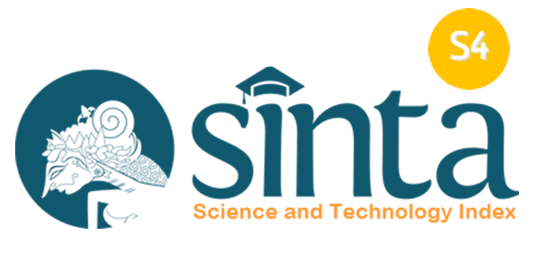The Use of Drill Method in Improving the Ability to brush Teeth Self-help for Students with Intellectual Disabilities
Abstract
Keywords
Full Text:
PDFReferences
Agustiningsih, A. A. (2016). Pelatihan menggosok gigi untuk meningkatkan kemampuan bina diri anak tunagrahita sedang di SLB. Jurnal Pendidikan Khusus, 9(1), 1-10.
Andria, R. (2017). Meningkatkan motivasi belajar bina diri menggosok gigi melalui film pada anak tunagrahita sedang kelas I C1 SLB YPAC Sumbar Padang. Jurnal Penelitian Pendidikan Khusus, 4(3), 477-487.
Anggraini, I., and Marlina, M. (2018). Peningkatkan keterampilan bina diri melalui teknik shaping pada siswa tunagrahita ringan. Jurnal Penelitian Pendidikan Kebutuhan Khusus (JUPPEKhu), 6(1), 186-191.
Ardiyanto, S. (2014). Meningkatkan kemampuan bina diri melalui analisis tugas pada anak tunagrahita sedang kelas 1 Di SLB Limas Padang. Jurnal Penelitian Pendidikan Khusus, 3(2), 17-37.
Fatmawatri, L. (2020). Peningkatan hasil belajar ipa materi organ gerak manusia melalui metode active knowledge sharing. Jurnal Pendidikan DEWANTARA: Media Komunikasi, Kreasi dan Inovasi Ilmiah Pendidikan, 6(2), 11-21.
Jaelani, M. B. (2014). Metode drill bermedia video terhadap keterampilan bina diri anak tunagrahita ringan. Jurnal Pendidikan Khusus, 4(1), 1-7.
Kurniawan, E. (2012). Pengaruh program bina diri terhadap kemandirian anak tunagrahita. Psympathic: Jurnal Ilmiah Psikologi, 5(2), 616-628.
Widayati, A. (2008). Penelitian tindakan kelas. Jurnal Pendidikan Akuntansi Indonesia, 6(1), 87-93.
Widiastuti, N. L. G. K., and Winaya, I. M. A. (2019). Prinsip khusus dan jenis layanan pendidikan bagi anak tunagrahita. Jurnal Santiaji Pendidikan (JSP), 9(2), 116-126.
Yosiani, N. (2014). Relasi karakteristik anak tunagrahita dengan pola tata ruang belajar di sekolah luar biasa. E-Journal Graduate Unpar, 1(2), 111-124.
DOI: https://doi.org/10.17509/jassi.v21i2.39520
Refbacks
- There are currently no refbacks.
Copyright (c) 1970 Universitas Pendidikan Indonesia

This work is licensed under a Creative Commons Attribution-ShareAlike 4.0 International License.




